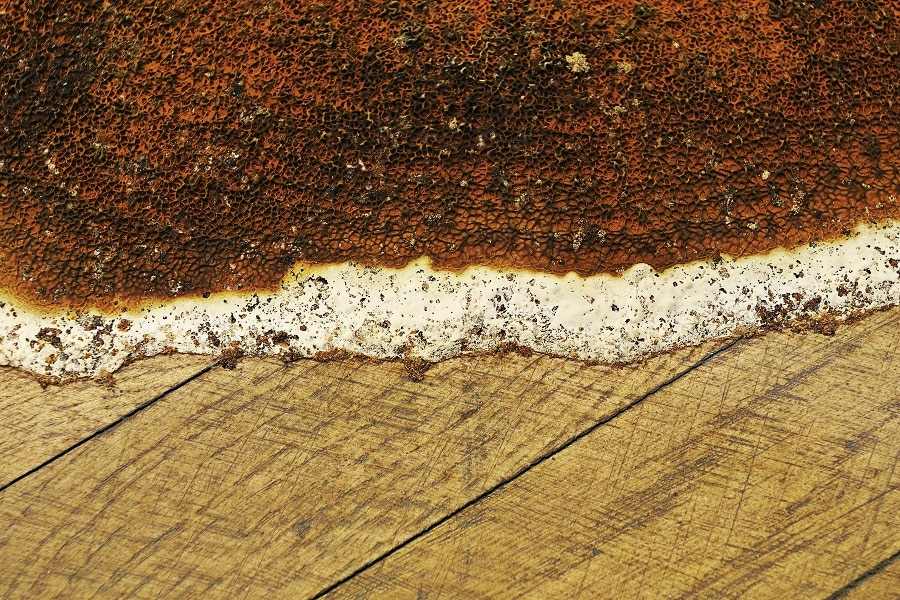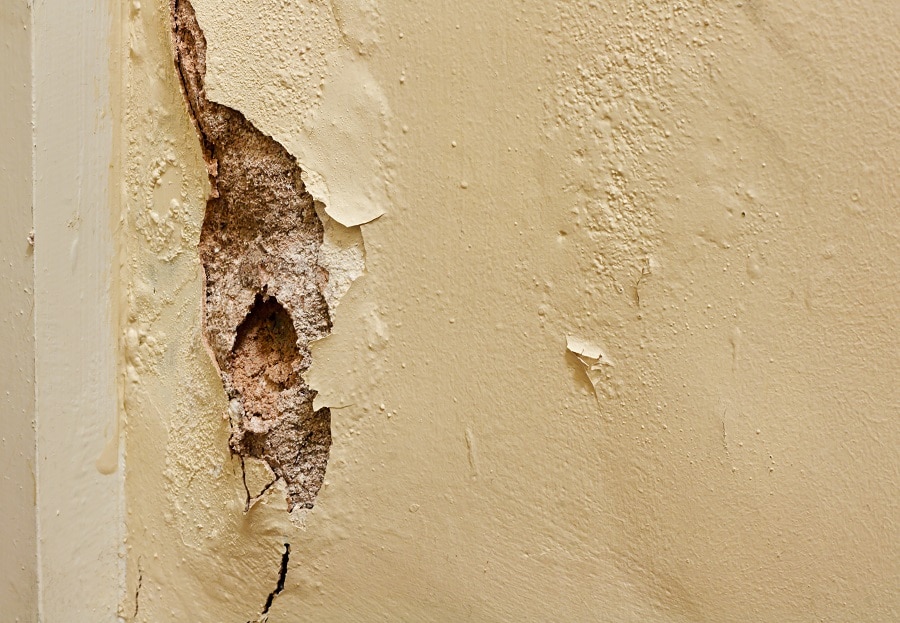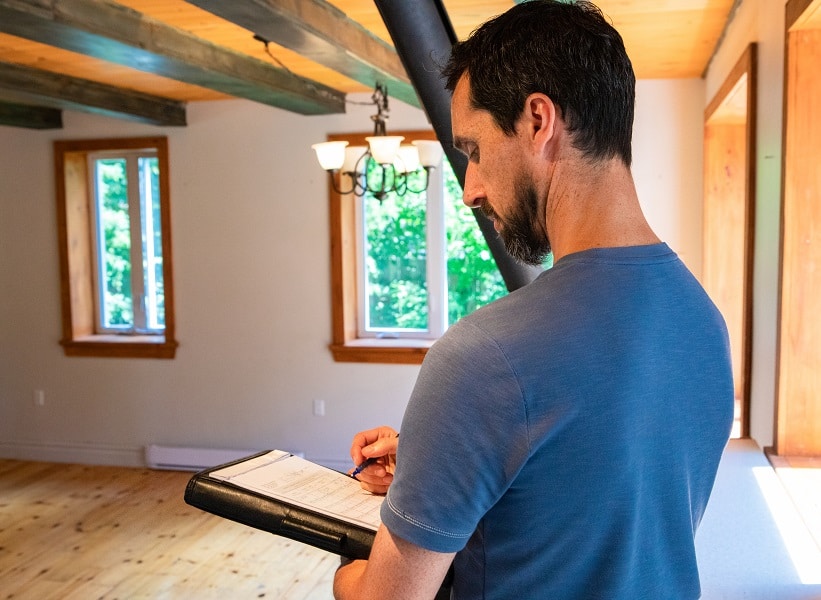What is dry rot?
Dry rot is a common term for various kinds of wood-decay fungus. Wood is cracked by Sporocarp (fungi), as Mycelium absorbs wood, dry rot results in fine dust spores, decomposition of wood and dry rot. Dry rot fungal spores need an adequate place to land and begin their colonies before they disperse through the underlying wood. Soil can be contaminated when it is drilled into, and old wood that has been affected by dry rot could also be a source of contamination.
This ensures that even treated wood will be re-infected with dry rot if it is wet enough (i.e., below 15 percent relative humidity). Dry Rot causes significantly greater damage than Wet rot, you may be shocked to hear that dry rot fungus can attack the structural timber in your property whilst remaining undetected. It often occurs where you’re not looking. This can be behind the plaster, under your floorboards or even in your loft. This is why it’s essential to know the signs and symptoms of dry rot and to get it treated quickly.
Our Guarantee
- upto 30 year guarantee
- customer focused team
- 20 years combined experience
- portfolio of satified customers
- attention to detail
- Construction line accreditation
- public liability insurance
- CHAS accreditation
What is the difference between dry rot and wet rot?
These specific types of dry rot use different species of spores, meaning that they look different from wet rot. The biggest difference, however, is that wet rot needs significant moisture to spread. Contrarily, dry rot does not spread as easily as wet rot. That’s right because timber based products never come into contact with mycelium – the fungus that causes Dry Rot to form. Dry rot fungus can be “silent”, but it is very active and spreads incredibly quickly once it has taken hold in a property. The consequences of wet rot fungus are not that serious, the decay is confined to areas where the timber becomes and remains wet.
Call Our Sussex Damp Experts team now for quote, consultation and advice:
Call on 01273 257 765.
What are the causes of dry rot?
Many species of fungi cause dry rot. Serpula Lacrymans is the most common one in Billingshurst. If you don’t fix it soon, it could cause serious damage to your home. It can have a major negative impact on the structural integrity of timber, and also the integrity of your home. Dry rot attacks when moisture levels are too high in your timber. This will attract the fungus that will use this moisture to extract nutrients. The expression “dry rot” is used to contrast between “wet wood” and “dry wood rot.”
Wet wood feeds on dry rot. Fungal spores require over 30% moisture to generate hyphae, which in turn can survive with 20% moisture. This hyphae can develop into a fungal body known as mycelium, which can disperse and find more wood in brick and stone. Hemicellulose, cellulose, and H2O will be removed from your timber by this fungus, only leaving a weak “skeleton” structure of the original wood. You’ll need a private survey to tell if your wood deterioration is caused by dry rot or another kind of fungus. It’s important to note that not all treatments will work for every case of nicotine damage.

The dangers of dry rot in Billingshurst
Dry Rot Effect on your Property
Dry rot can cause irreparable damage to wood and other materials in your home. Dry Rot is a fungus that attacks timber by breaking it down, causing timber to crumble. Extreme conditions may cause your home or appliances to fail. Dry rot is actually a fungal infestation that penetrates through the mortar and spreads across the brick or stone. This is why regular checks are important.
Dry Rot is a severe issue, which needs immediate maintenance and treatment. When fungus is evident, you need to call a restoration expert right away to prevent mold growth from worsening any damage that may be apparent. If you’re worried about dry rot, an inspection from our expert team can help you avoid major problems in the future.
Dry Rot Effect on Your personal health
Actually it is not the fungus that causes the damage. Regrettably, if dry rot does occur, the structural damage may be extensive to your health. This is extremely unhealthy for the infants, elderly people and those with respiratory problems like asthma.
What are the Warning Signs of Dry Rot?
Treatment and remedial works are substantially more expensive than early detection and prevention. A full assessment by a professional is recommended if you experience any of the following signs and symptoms.
-
The beginning of the dry rot cycle
Spores of dry rot are transported by the wind. If they are carried onto timber, they will begin to feed on it. When the wood has enough moisture, it allows fungal spores of Armillaria mellea to germinate and create hyphae, if the timber is giving them enough nutrients to do so. As these hyphae grow and feed, they will join up into a spider web-looking collection called mycelium. Mycelium ranges in different colors such as light gray or solid white. They can even work their way into your property’s foundations and spread into the mortar, bricks and plaster to find new timber.
-
Your timber is damaged.
If the wood is infected by dry rot, it can become flexible and dry. Often this can also cause the timber to collapse. The first sign of dry rot is darkening of the wood. In fact, dry rot can result in what is called cuboid cracking. Cuboidal cracking is when timber breaks up into cubes that are around 50 mm in width. This damaged timber will also often have hyphae, the white fungal growth. Hyphae can look like cobwebs and is a common symptom of dry rot.
-
Your timber will smell.
Dry rot attacks the timber, leaving it with a distinct fungal and musty odour. This happens, even when you can’t see an outburst of dry rot. Despite the odor, dry rot may not yet begun to grow.
-
Your timber will have fungus bodies on it.
This is the final stage of dry rot and the most noticeable. Fruiting bodies like Mushroom can start to attach themselves to your wood. They occur when dry rot can no longer feed on the wood, so the fungus has to churn out spores instead.
-
Your timber will have spore dust.
Spores of the dry rot fungus don’t just occur in woods already affected by dry rot. It could be a sign of dry rot if you see splots of rusty colored dust embedded decomposed spores. In the last step of the dry rot stage, fruiting bodies yield spore dust.
Dry Rot Treatment in Billingshurst

Only when moisture levels are over 20 percent will a dry rot infestation occur. The first safeguard to remove the presence of fungi is the monitoring of your living room or property’s moisture levels. Now you will be in control of the moisture levels. Consult a professional for a proper treatment of your dry rot.
Sussex Damp Experts can help you with the removal of infected timber and any remedial work. A professional should remove any infected timber. The required treatment lies on the knowledge of a dam proofing expert. Some treatments are injected into the timber, others coat the surface of the timber. There are plenty of options for defensive treatment. These chemicals demand precise amounts and can have negative side effects if they are inhaled or ingested wrongly.
Boron rods can also be inserted into your timber by an expert. Boron is a hazardous material, hence damp proofing experts wear the protective clothing. We use our specialist team at Damp Proofing to find any issues with dry rot, and assess the extent of the issue. Dry rots are a serious problem and can lead to serious issues if left untreated. If dry rot is not treated right away, it will spread throughout your property and cause real damage. We will provide a damp proofing solution that is right for your needs. You shouldn’t delay. If you spot any signs of dry rot, call us immediately on 01273 257 765 to protect your home.
How can you prevent dry rot damage in Billingshurst?
The first step in treatment is to avoid dry rot. Any wooded areas of the house that traps enough water and is subject to humidity/moisture ingress can result in a dry rot infestation. Practices that prevent them from forming: Confirm that your house doesn’t have any leaks. Make available sufficient ventilation.
Ventilate the attic correctly and wrap it. Properly freshen crawlspaces. Seal basement and crawlspace floors to reduce ground moisture. Check all flickering walls and roofs to ensure that the water is adequately directed. Stay out of sinks and drains. Using a wet system? Check for plumbing and heating leaks in your home. The easiest way to mitigate the chance of dry rot is to decrease moisture levels, because of the moist conditions needed for dry rot fungus to feed and germinate. If you have a leak, plugging the leak can help reduce further damage to the house.
Speak to a Dry Rot specialist in Billingshurst
We are equipped to deal with any damp proofing or dry rot problems affecting your property or home. We will give you a free estimate for how much it will cost to get rid of all of it before we begin work. Over the years, we supported the damp concerns of thousands of home Billingshurst owners and could even benefit you. Contact us on 01273 257 765 for a free quote and survey. I am an expert in dry rot and timber treatment. I can visit your property to identify the extent of the infestation and recommend a solution specific to your requirements. This helps us to offer unbiased guidance and advice about the sort of care you will require.

All of our surveyors are fully qualified and will be able to identify everything from Dry Rot to moisture ingress, including the solution, and give you a fair cost for any remedial works. Dry rot gets worse over time by its nature, it is important to contact us immediately if you think you have a problem. Sussex Damp Experts offers fast, professional and affordable support to help with dry rot problems affecting your home,Call us now on 01273 257 765 for help.
FAQ
Should dry rot be restored or replaced?
A certain level of dry rot can be repaired, but whether the damaged areas provide the house with structural stability, such as beams and joints, or even flooring, it is not recommended. Replace the wood in such a situation instead of repairing it. Whether you restore or rebuild the wood, it is better if you avoided the conditions that caused the rot to flourish in the first place or risked it coming back. Your roof leaks, broken gutters, or downspouts, plumbing leaks or insufficient ventilation should be inspected when considering a roof moisture accumulation You may consult a specialist to find and repair the problem.
Will you be able to treat my Dry Rot problem effectively?
With our expertly trained surveyors and specialists, a dry rot problem can be treated, rectified, and your timber can be protected for the future.
How do I discover how far Dry Rot has spread?
If you have traced the dry rot fungus quickly or not, a professional will identify the source of the problem. They will be able to trace the fungus in the different masonry and plaster from which it has spread.
How much can dry rot widen?
Dry rot spores can spread in anyplace with the right environmental settings. The reason is that they are carried in the atmosphere. If your timber has a moisture content of around 20%, and if it is in the open air, these conditions are attractive to dry rot fungus. This suggests that fungus groups can disperse to multiple materials. If dry rot is spreading across masonry and plaster, and if it reaches more timber to feed off where the timber is moist. It can widen further. Dry rot fungus needs five things to survive: the right temperature, drive rot spores, moisture, oxygen, and the food source. In any home in Brighton most of this is present.
Will dry rot stretch?
What should I do to control dry rot?
First identify the reason for your timber moist before solving it. A different treatment shall be given if the reason for your timber moisture is outside.
What are the effects of living dry rot unchecked?
Dry rot is the most insidious form of moisture that can infest property and cause permanent damage to the building if left untreated. Sometimes, once the harm is already done due to the places in which the problem is likely to be the presence of dry rot does not come to light.
Is dry rot stringent?
Dry rot can be particularly common in wooden properties, so it is essential that early signs of dry rot are identified before the damage becomes too severe.
How am I meant to know if I have dry rot?
A timber survey will assess how your timber is affected by being exposed to moisture. Later on, fruiting bodies and mycelium will be noticeable in the drive rot life-cycle.
Where can dry rot grow?
Dry rot attacks and rots timber that’s been in contact with water for a long period of time. Although it can often be mistaken for other problems in its early stages, it is important to seek advice. In every structure, both old and new, dry rot can grow. The reason being that it is caused by moisture and wetness that happen anyplace. Dry rot can be caused by leaks or weather, meaning the type of property does not affect it.




